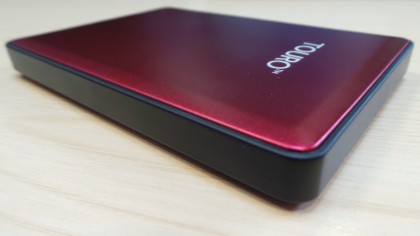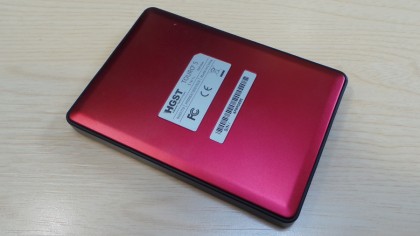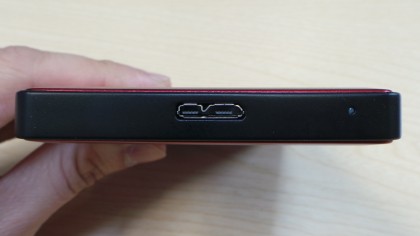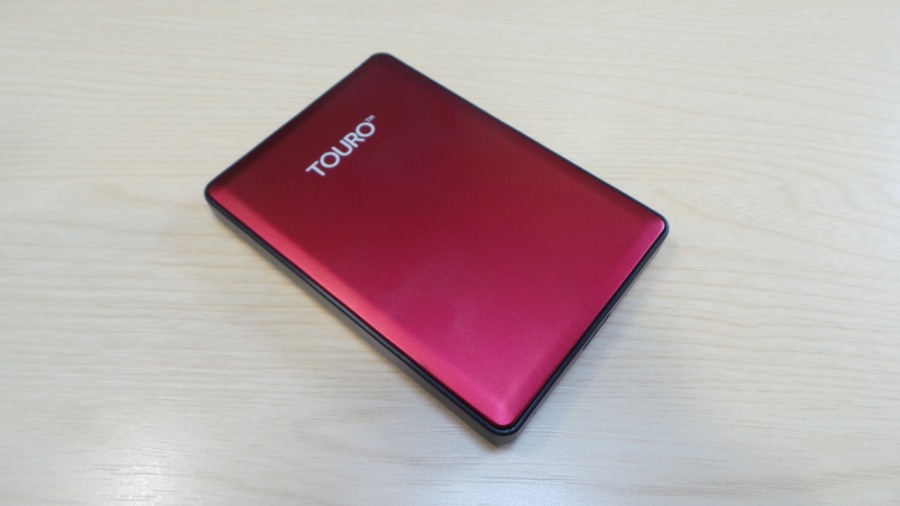TechRadar Verdict
The Touro S is a no-frills, straightforward external hard disk drive. It is fast and while it costs more than 5400RPM drives, that extra outlay is easily justified.
Pros
- +
Fast
- +
Well designed
- +
3GB of online storage
Cons
- -
Enclosure could be sturdier
Why you can trust TechRadar
WD acquired storage firm HGST a few years ago and although both companies are kept separate, there's a deliberate strategy to prevent products from both companies from overlapping. So WD ends up selling mostly storage solutions for the consumer, OEM and SMB markets, with HGST focusing on the B2B and enterprise side.
Amongst all this is an oddity – the Touro range which comprises of desktop and mobile external hard disk drives, which is technically an HGST brand but is seen as a separate entity entirely. One of its products stands out from the market, the Touro S (otherwise known as the HTOSEA10001BHB), a 1TB 2.5-inch external hard disk drive that has a 7200RPM spinning speed.

Almost all other 2.5-inch hard disk drives run at a comparatively mundane 5400RPM, so in theory, the Touro S should be up to 33% faster than the competition, although there are other factors influencing speed like the number of platters. HGST is more conservative when it comes to detailing the enhanced performance here, quoting only a 23% boost.
The Touro S uses a Travelstar 7K1000 from HGST (more specifically the HTS721010A9E630). It has two 500GB platters (with a 676Gbsi platter density), 32MB cache and a 12ms access time. That hard drive, which was launched nearly two years ago, costs just over £54 at Amazon (about $81, AU$105) while Tesco sells the Touro S for £55 (about $82, AU$106).

Design and specifications
The drive is certainly one of the smallest we've seen; it is thicker than the Seagate Seven and its finish is not as elaborate, but it has a smaller footprint compared to the Kate Moss of external hard disk drives.
Externally it is an 8 x 11.5 x 1.2cm slab with a black rim along with red front and rear facias, which HGST claims to be a "stylish, aluminium design". The Touro S is also available in silver, grey and champagne gold.
The Touro branding is stamped on the front while the technical details are stickered on the back. Other than a lonely mini-USB 3.0 connector and a status light, there are no other buttons or connectors. Both sides of the drive flex a bit which makes it feel less sturdy.

The drive comes preloaded with local and cloud backup software (unimaginatively called the Touro Cloud backup), a 3GB cloud storage allocation and a standard USB 3.0 cable. You also get a two-year warranty as standard and you can upgrade your cloud storage allocation to 250GB for a fee ($132.75 for three years – around £88, AU$172).
As with most bundled backup software, this is a very basic effort – we'd certainly suggest that you check out our best free backup application list and give some of them a whirl to find out which one suits your needs.
Performance
A faster spinning hard disk drive will in theory generate more heat, be noisier and consume more power. The Touro S was, subjectively, slightly noisier than the other drives we've tested before, but it felt, in the worst cases, only slightly warm. A deal-breaker? Hardly.

Sequential reads and writes were above average; the drive scored 146Mbps and 133Mbps respectively. On PCMark 8, it managed to reach 2455 points, about 24-26% better than either the 1TB flavours of the LaCie Fuel or the Samsung Wireless 1TB, which is in line with the predictions of HGST.
A faster spinning hard disk drive does help and the Touro S is the living proof that it actually does make sense as long as you do not care about power consumption (remember, the drive consumes more power when in use, but faster transfer rates mean that it should revert to an idle state faster, mitigating some of that cost).

Désiré has been musing and writing about technology during a career spanning four decades. He dabbled in website builders and web hosting when DHTML and frames were in vogue and started narrating about the impact of technology on society just before the start of the Y2K hysteria at the turn of the last millennium.
